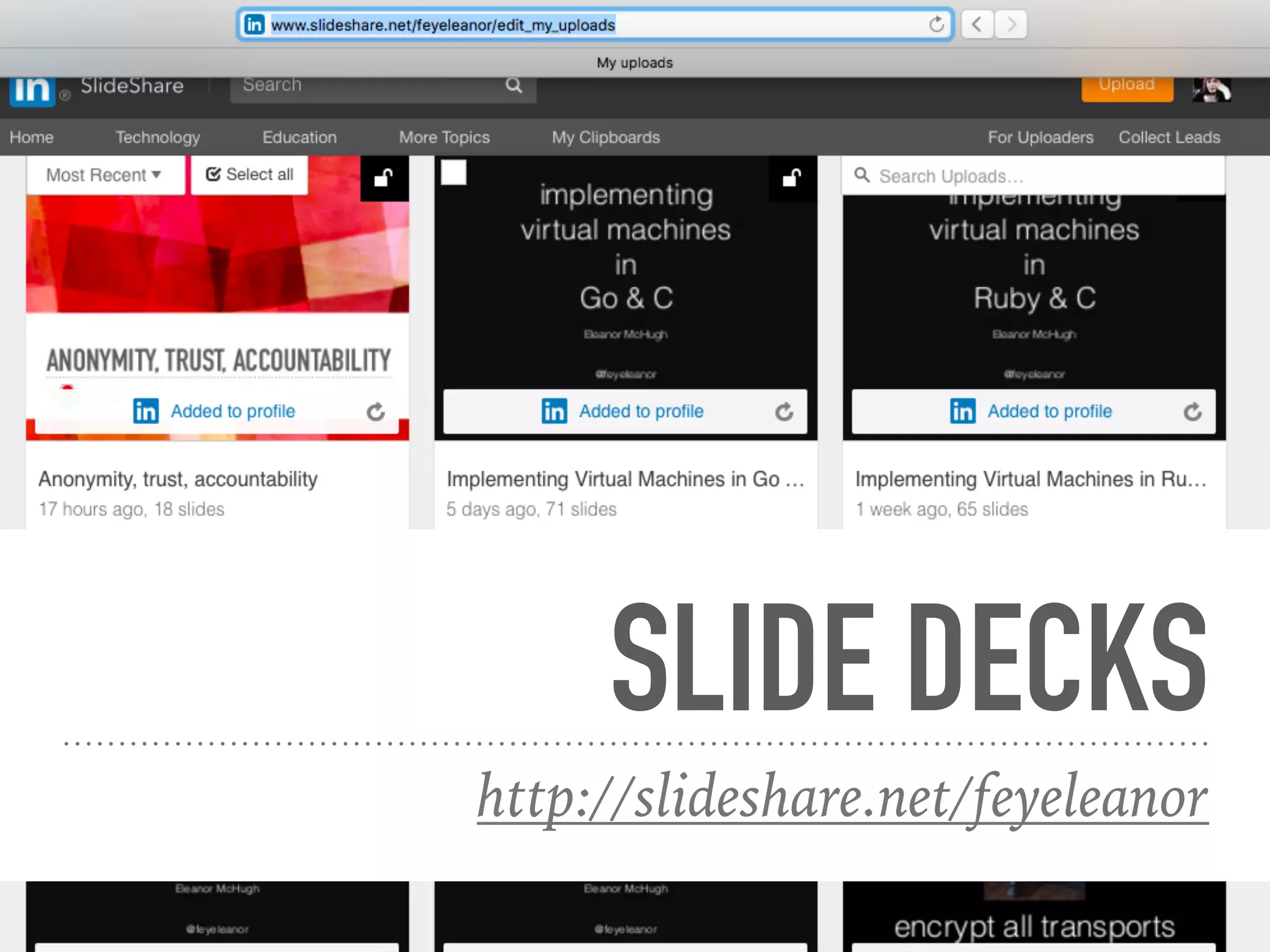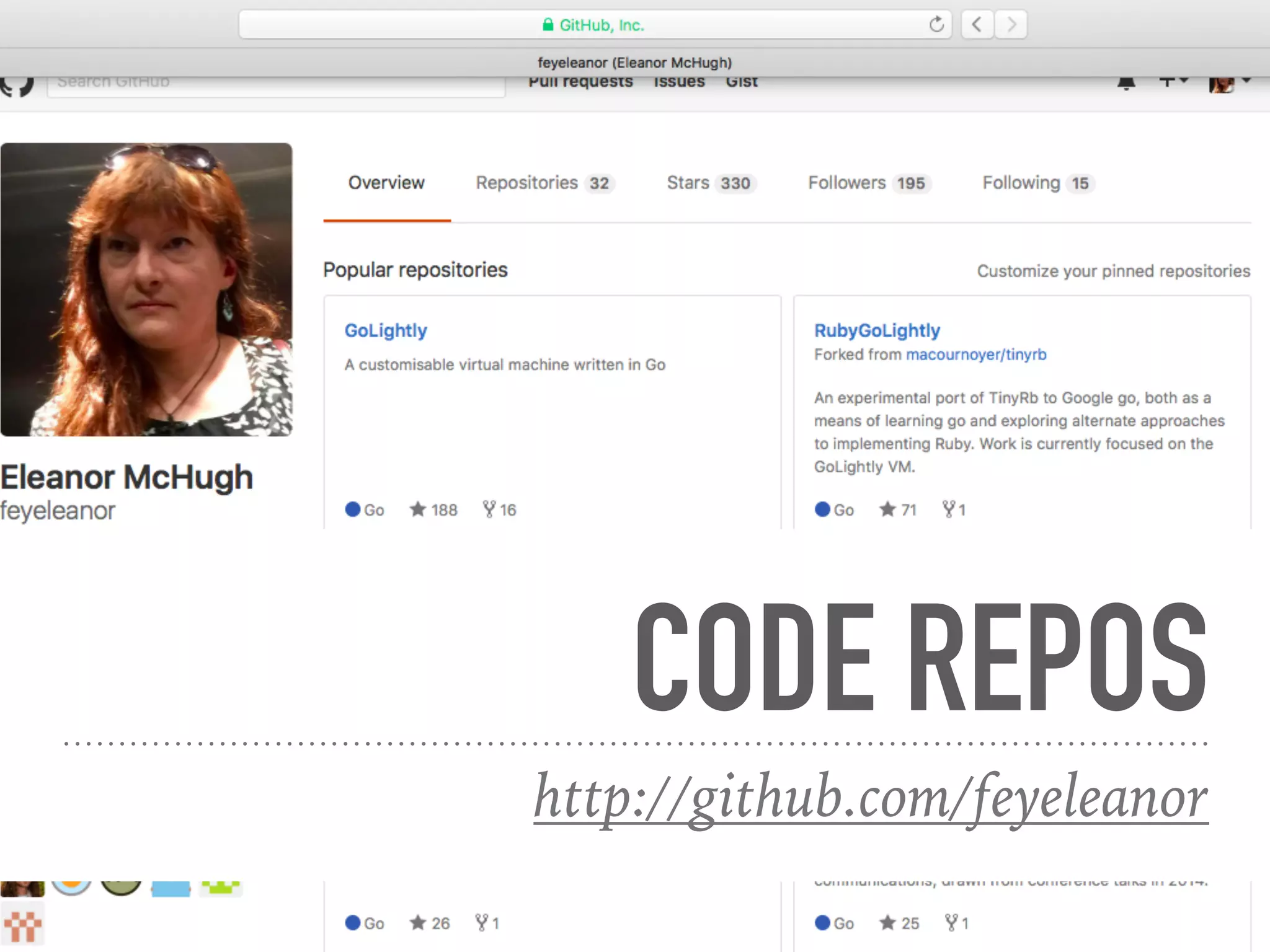This document discusses using Leanpub to write and publish a living book. It explains that a living book is inspired by Neal Stephenson's A Young Lady's Illustrated Primer, where each chapter has a theme and pushes the subject matter to new problems. The author aims to write such a living book on Leanpub about a topic of interest, by continually adding new material until running out of content. Each chapter will be structured as an adventure to not only teach solutions to existing problems, but how to solve new ones. The document provides examples of chapter content from a Hello World book that introduces network encryption.



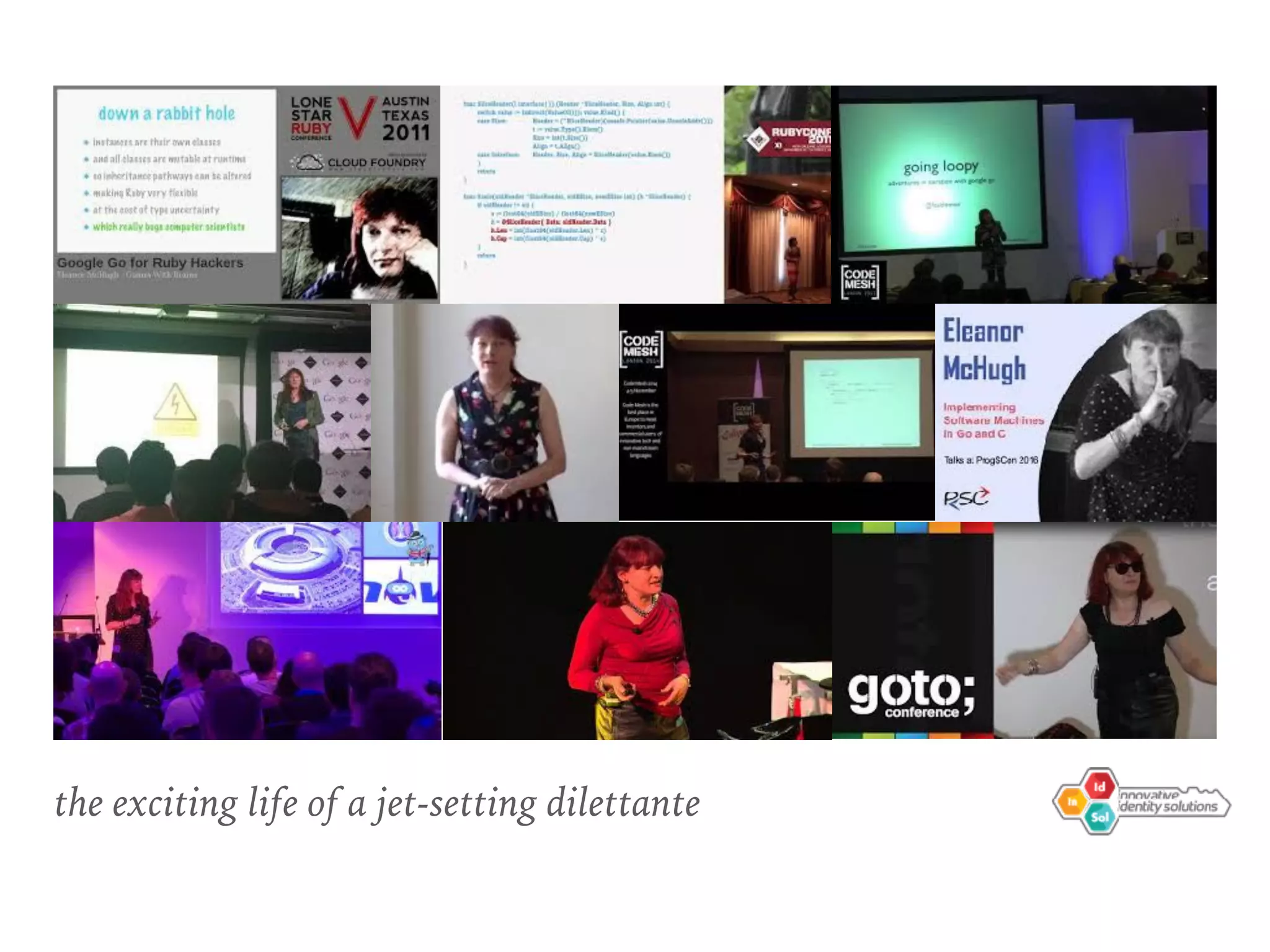




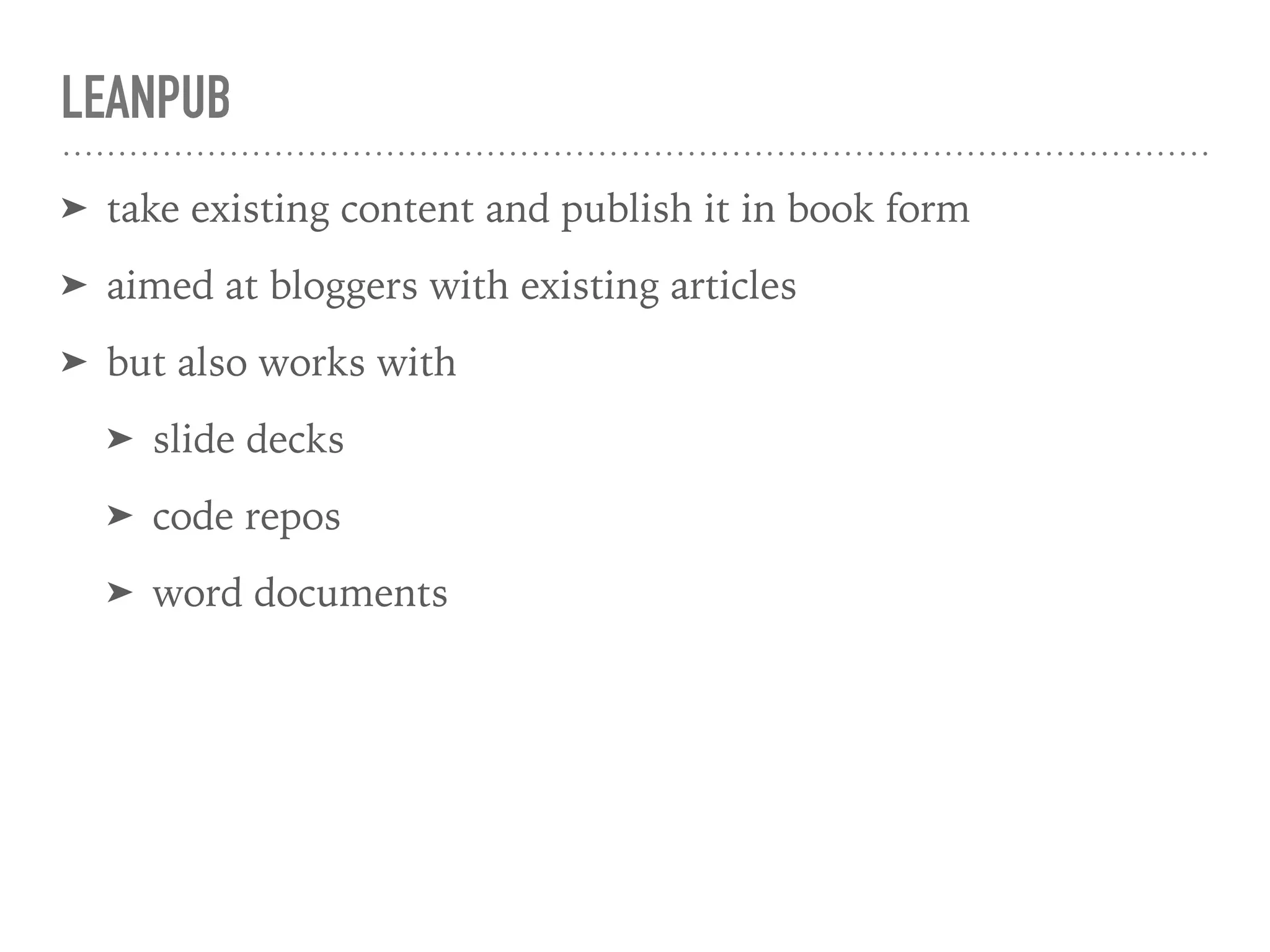
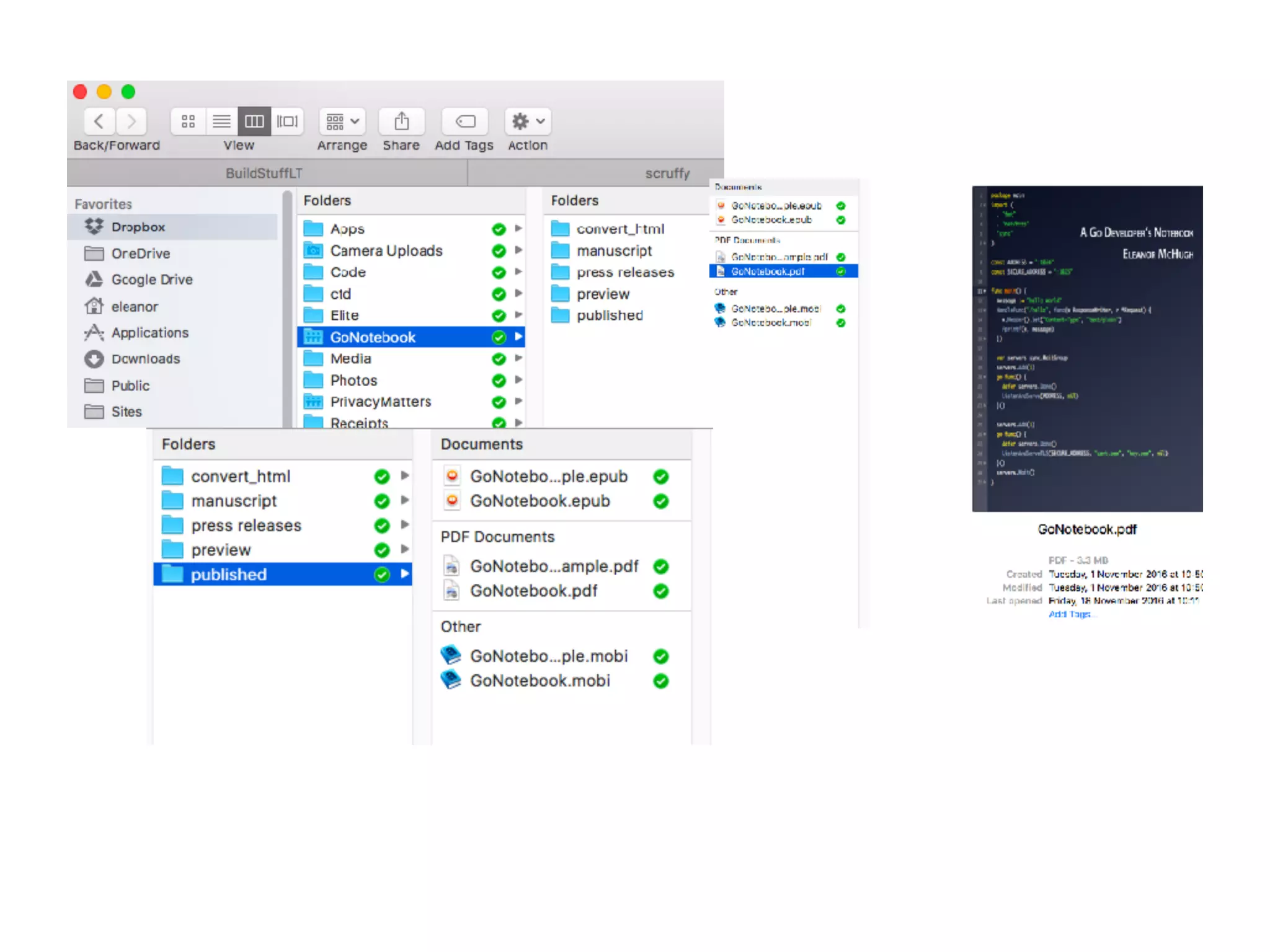
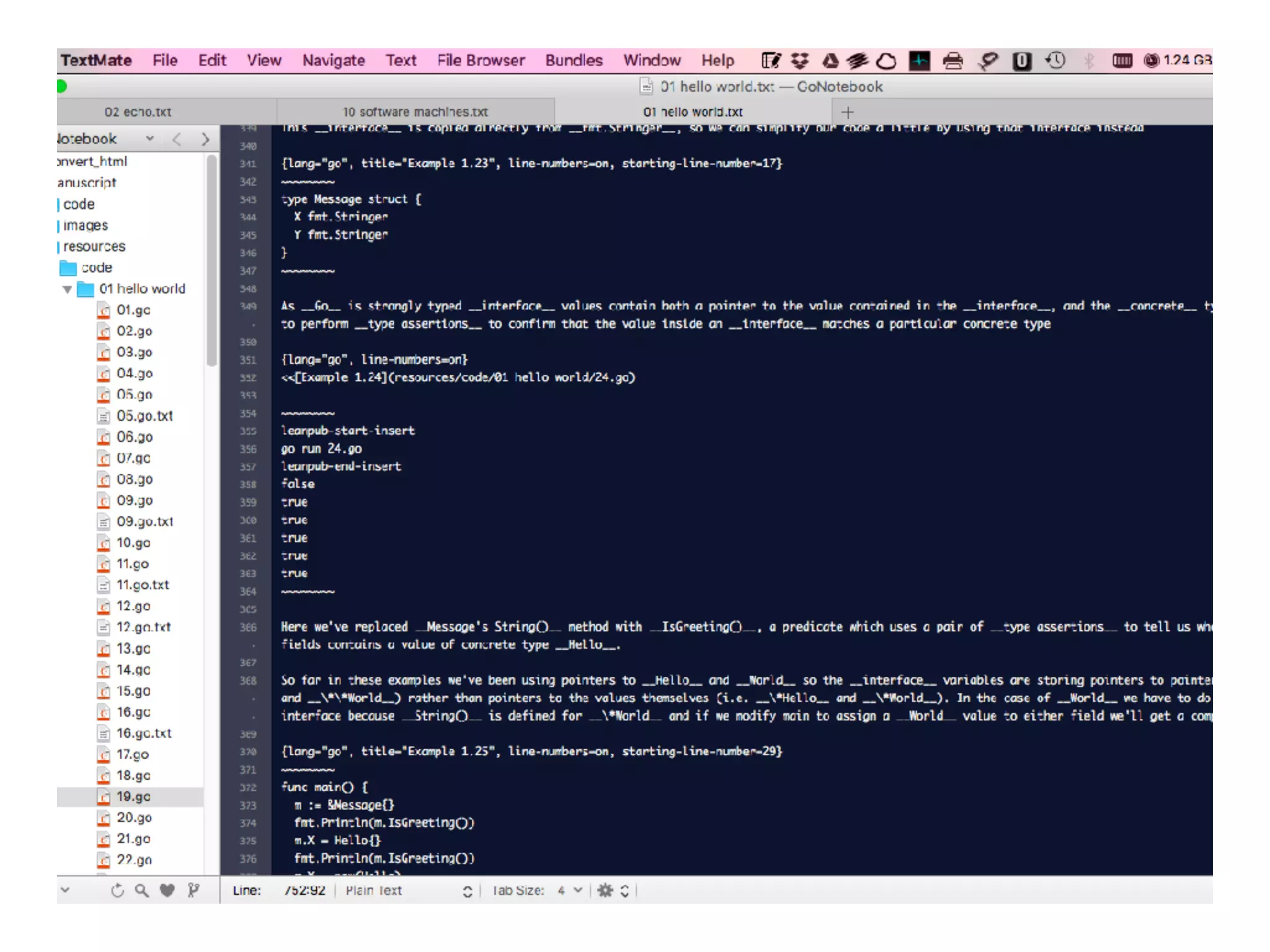
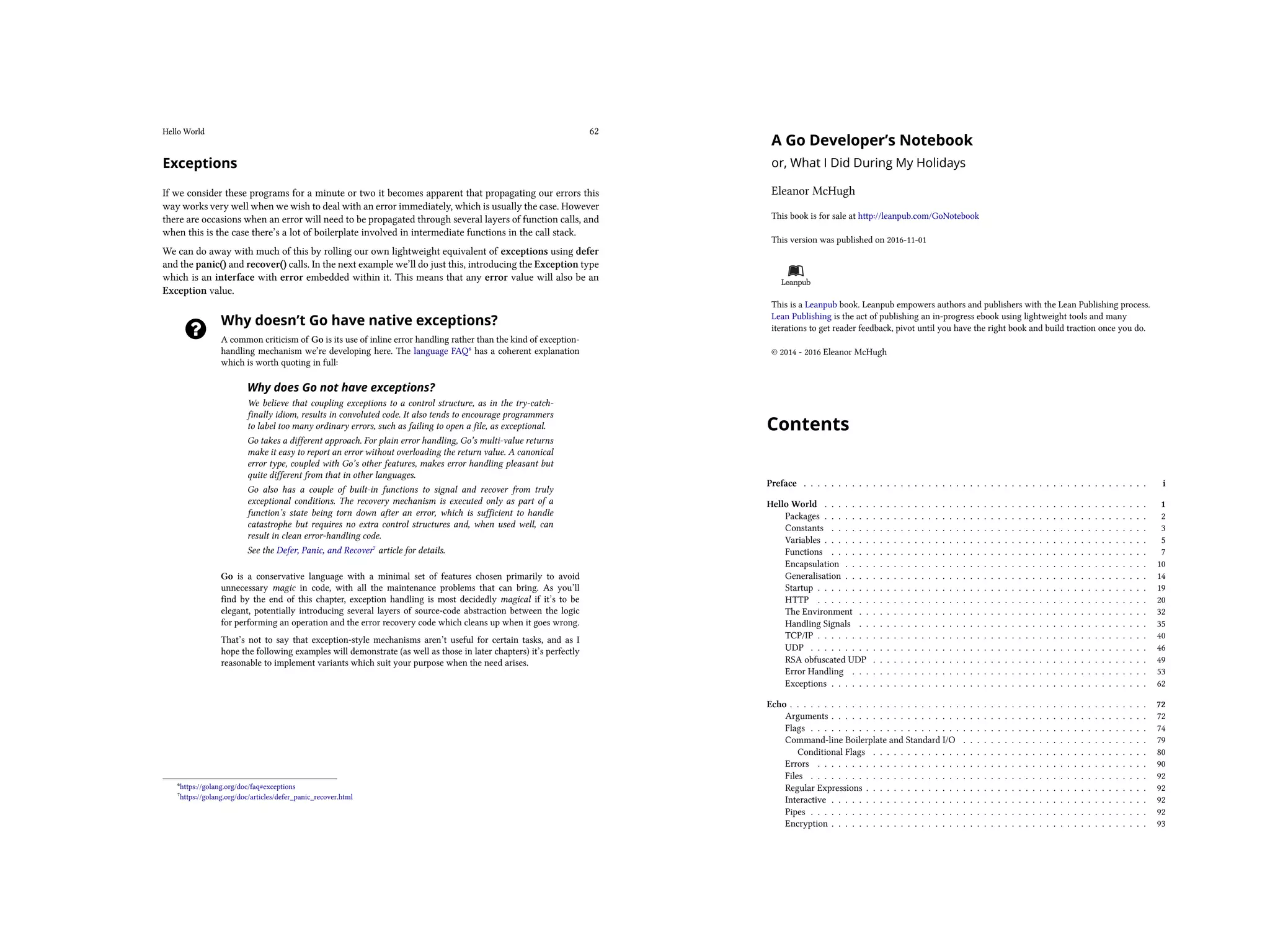
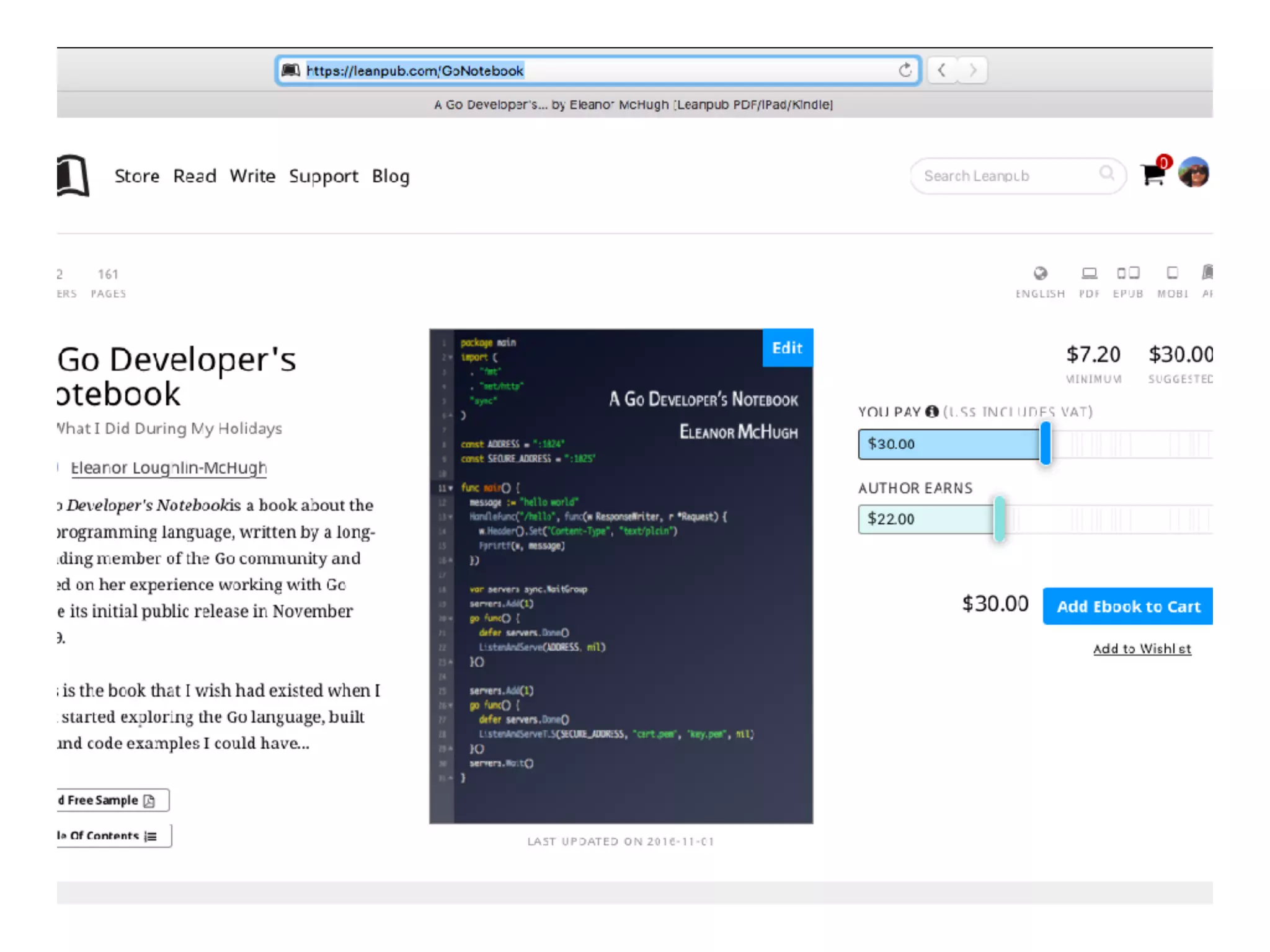
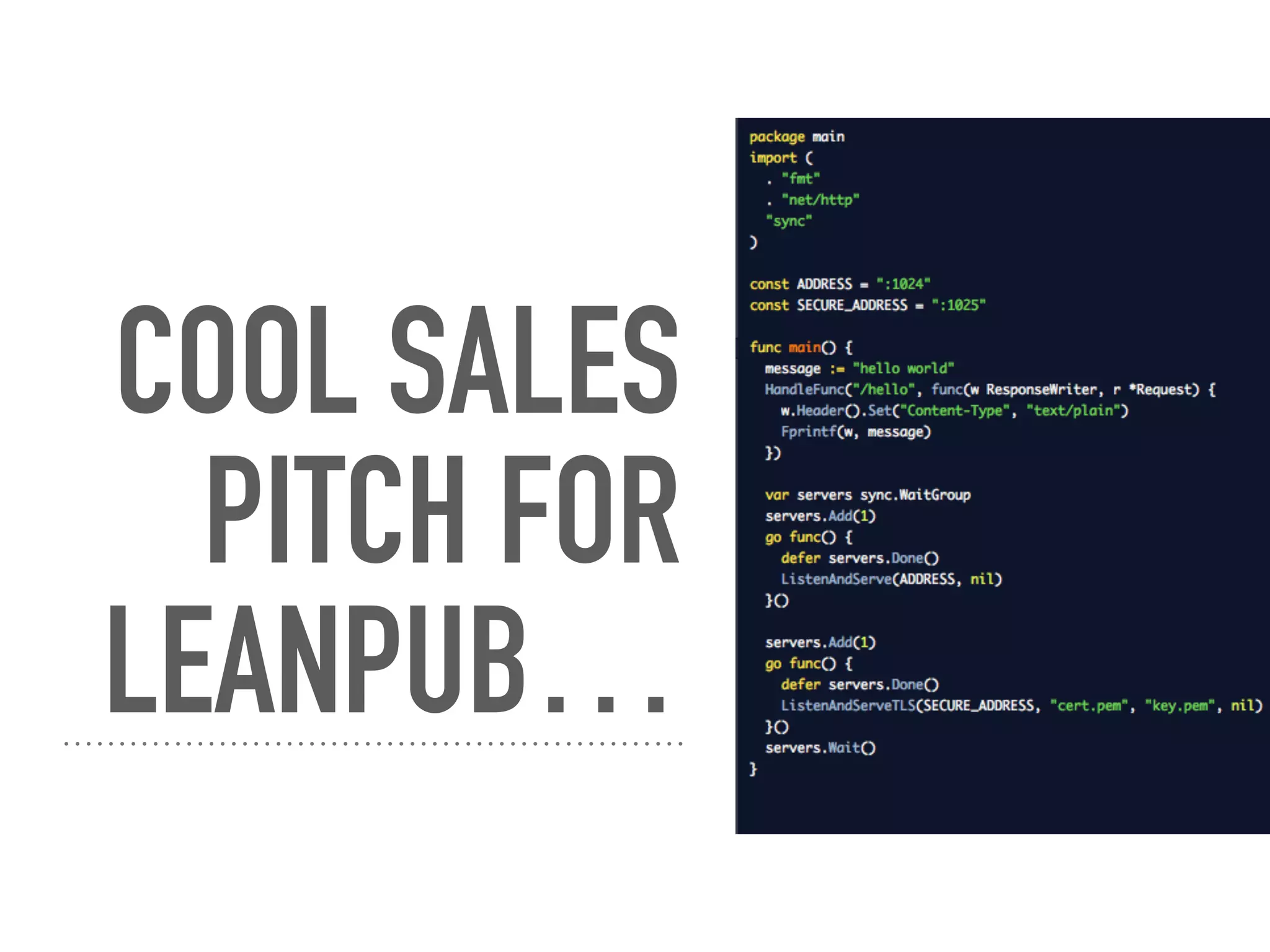
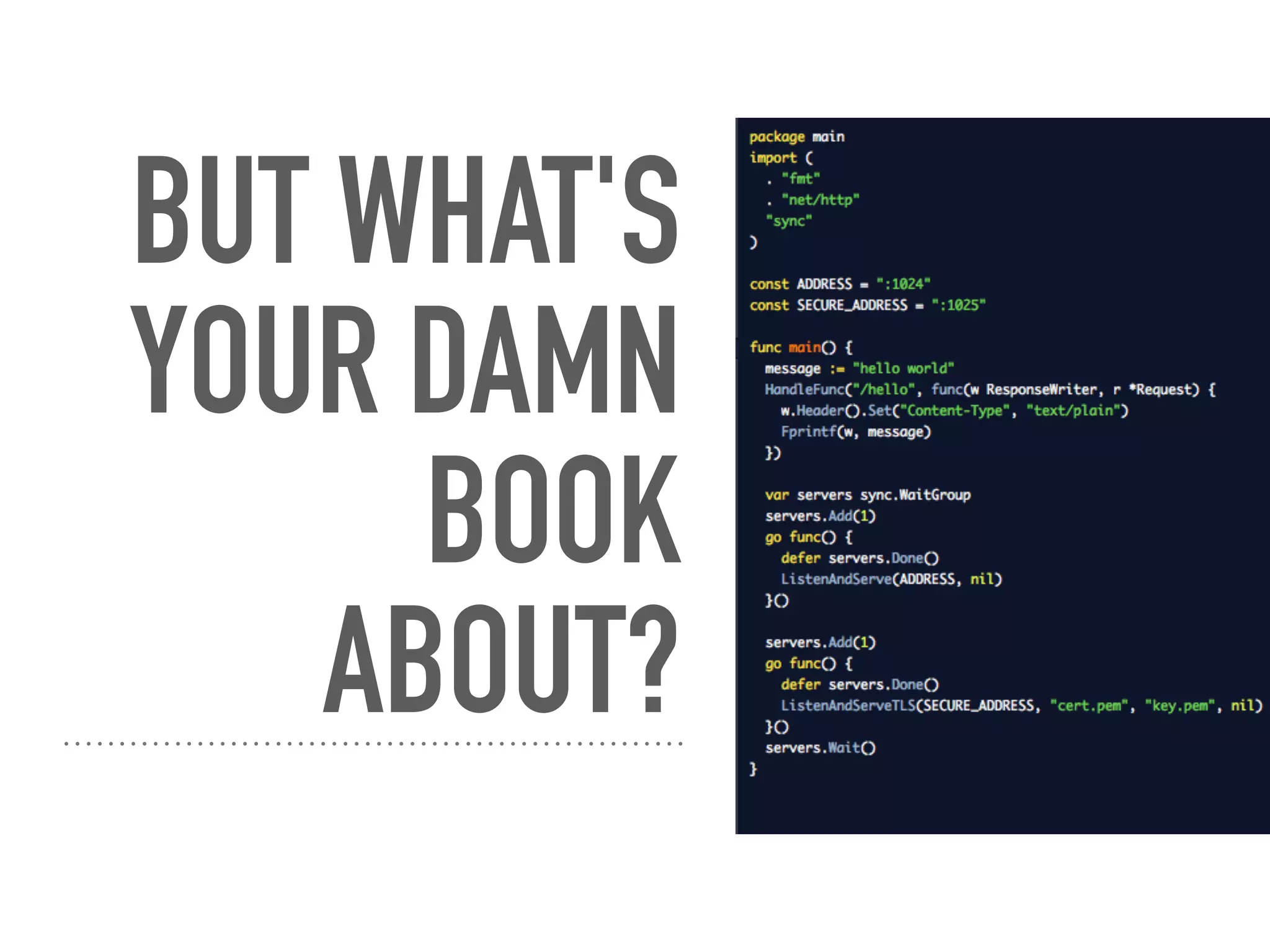
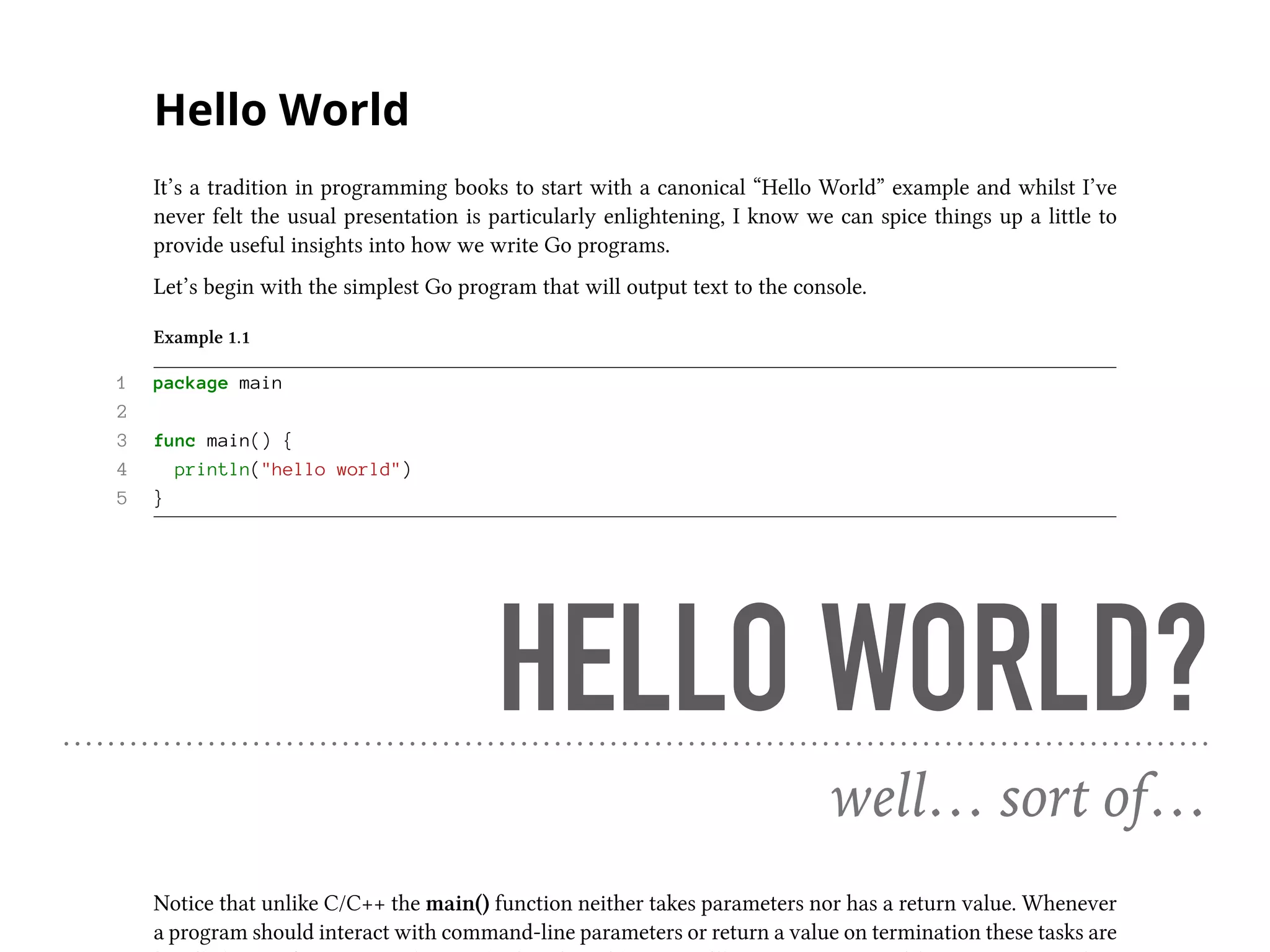


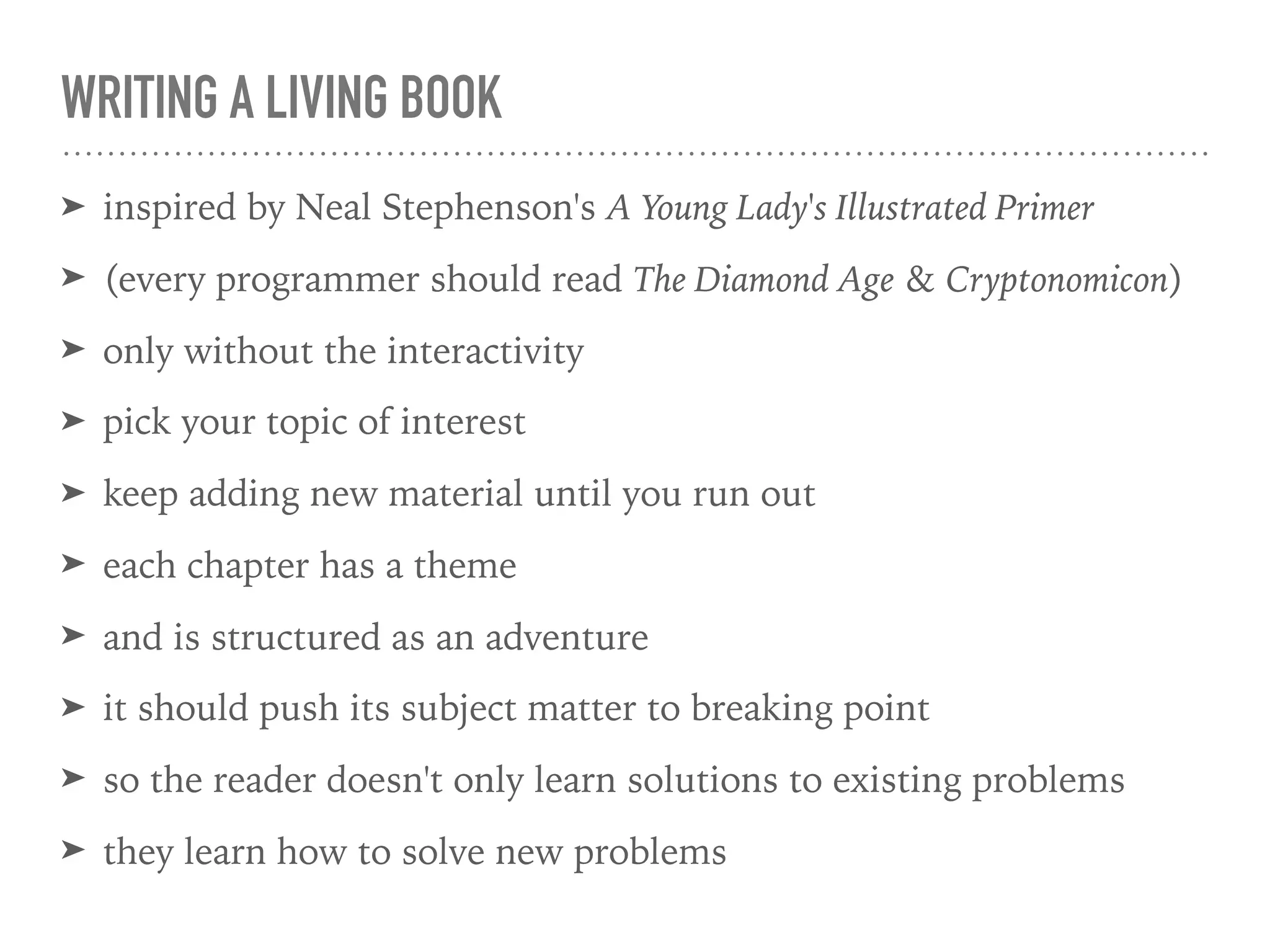
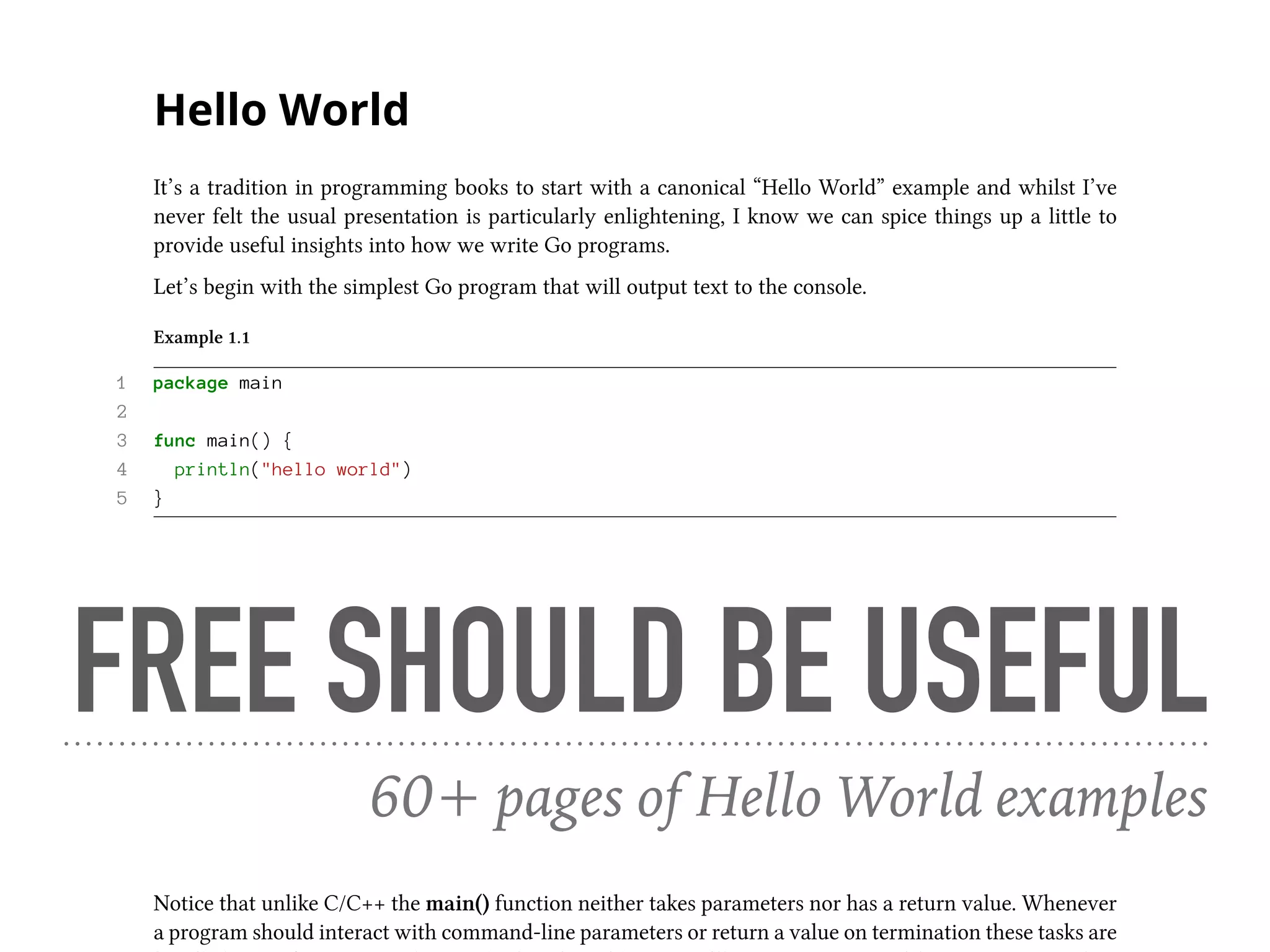
![Hello World 53
16 func main() {
17 Serve(":1025", func(connection *UDPConn, c *UDPAddr, packet *bytes.Buffer) (n int) {
18 var key rsa.PublicKey
19 if e := gob.NewDecoder(packet).Decode(&key); e == nil {
20 if response, e := rsa.EncryptOAEP(sha1.New(), rand.Reader, &key, HELLO_WORLD, RSA
21 _LABEL); e == nil {
22 n, _ = connection.WriteToUDP(response, c)
23 }
24 }
25 return
26 })
27 }
28
29 func Serve(address string, f func(*UDPConn, *UDPAddr, *bytes.Buffer) int) {
30 Launch(address, func(connection *UDPConn) {
31 for {
32 buffer := make([]byte, 1024)
33 if n, client, e := connection.ReadFromUDP(buffer); e == nil {
34 go func(c *UDPAddr, b []byte) {
35 if n := f(connection, c, bytes.NewBuffer(b)); n != 0 {
36 Println(n, "bytes written to", c)
37 }
38 }(client, buffer[:n])
39 }
40 }
41 })
42 }
43
44 func Launch(address string, f func(*UDPConn)) {
45 if a, e := ResolveUDPAddr("udp", address); e == nil {
FREE SHOULD BE USEFUL
make a sound introduction to network encryption](https://image.slidesharecdn.com/presentation-161123175530/75/Finding-a-useful-outlet-for-my-many-Adventures-in-go-21-2048.jpg)
![Hello World 13
In the function signature we use v …interface{} to declare a parameter v which takes any number of
values. These are received by print() as a sequence of values and the subsequent call to Println(v…) uses
this same sequence as this is the sequence expected by Println().
So why did we use …interface{} in defining our parameters instead of the more obvious …string? The
Println() function is itself defined as Println(…interface{}) so to provide a sequence of values en masse
we likewise need to use …interface{} in the type signature of our function. Otherwise we’d have to create
a []interface{} (a slice of interface{} values, a concept we’ll cover in detail in a later chanpter) and copy
each individual element into it before passing it into Println().
Encapsulation
In this chapter we’ll for the most part be using Go’s primitive types and types defined in various
standard packages without any comment on their structure, however a key aspect of modern programming
languages is the encapsulation of related data into structured types and Go supports this via the struct
type. A struct describes an area of allocated memory which is subdivided into slots for holding named
values, where each named value has its own type. A typical example of a struct in action would be
Example 1.17
1 package main
2
3 import "fmt"
4
5 type Message struct {
6 X string
7 y *string
8 }
9
10 func (v Message) Print() {
11 if v.y != nil {
12 fmt.Println(v.X, *v.y)
13 } else {
14 fmt.Println(v.X)
15 }
16 }
17
18 func (v *Message) Store(x, y string) {
19 v.X = x
20 v.y = &y
21 }
22
23 func main() {
24 m := &Message{}
25 m.Print()
26 m.Store("Hello", "world")
27 m.Print()
28 }
ENCAPSULATION
package main
import "fmt"
type Message struct {
X string
y *string
}
func (v Message) Print() {
if v.y != nil {
fmt.Println(v.X, *v.y)
} else {
fmt.Println(v.X)
}
}
func (v *Message) Store(x, y string) {
v.X = x
v.y = &y
}
func main() {
m := &Message{}
m.Print()
m.Store("Hello", "world")
m.Print()
}](https://image.slidesharecdn.com/presentation-161123175530/75/Finding-a-useful-outlet-for-my-many-Adventures-in-go-22-2048.jpg)
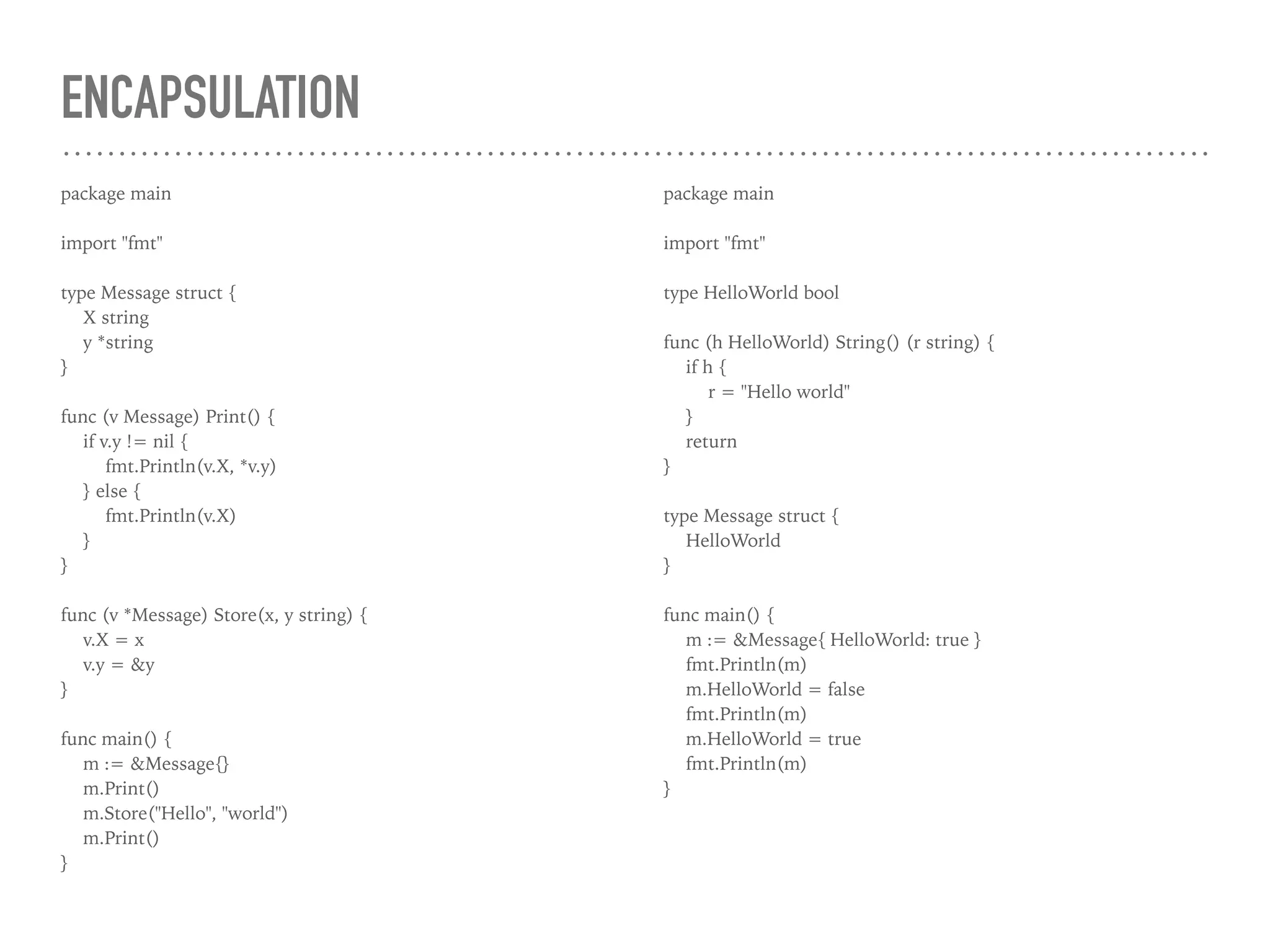
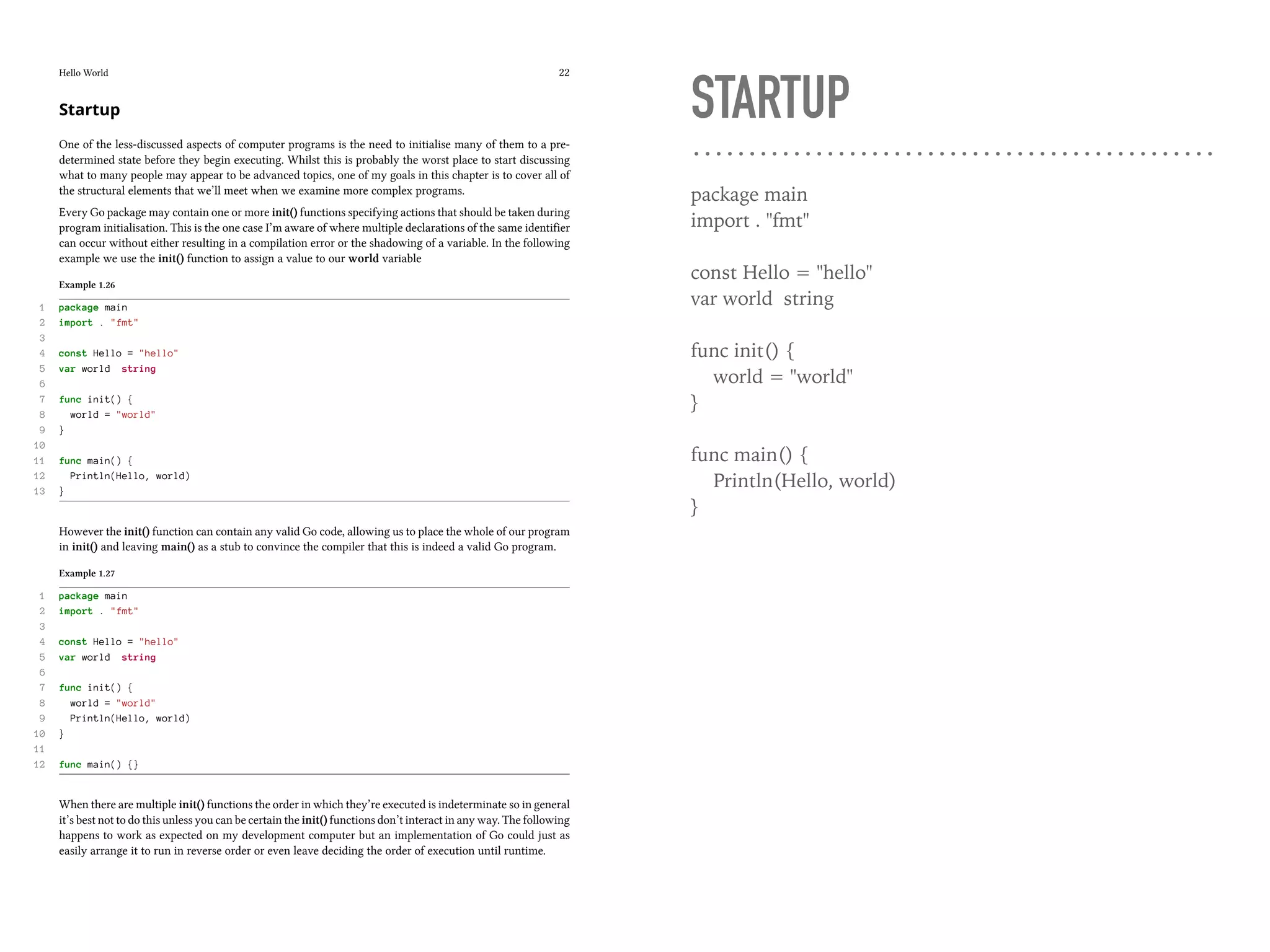
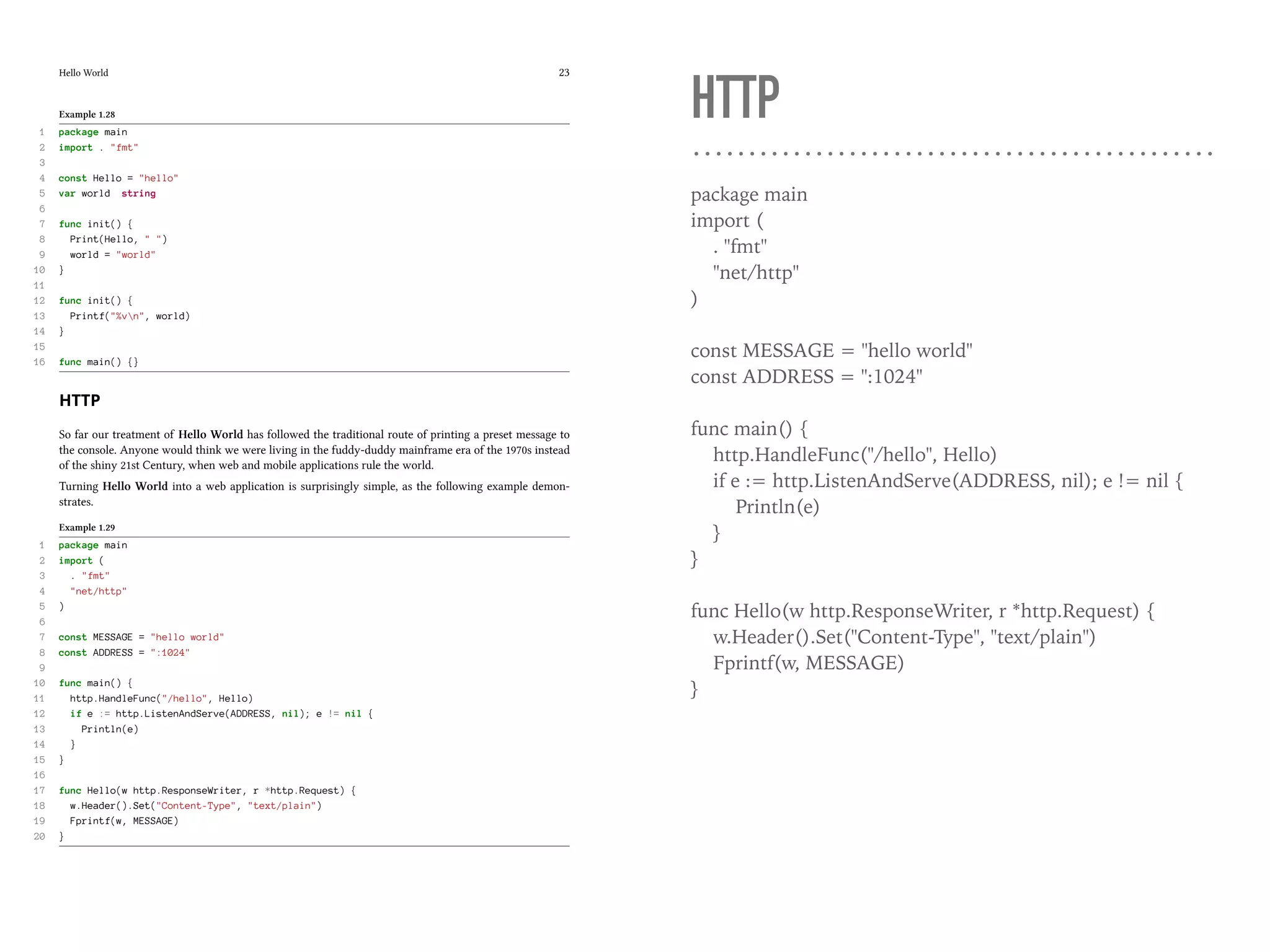
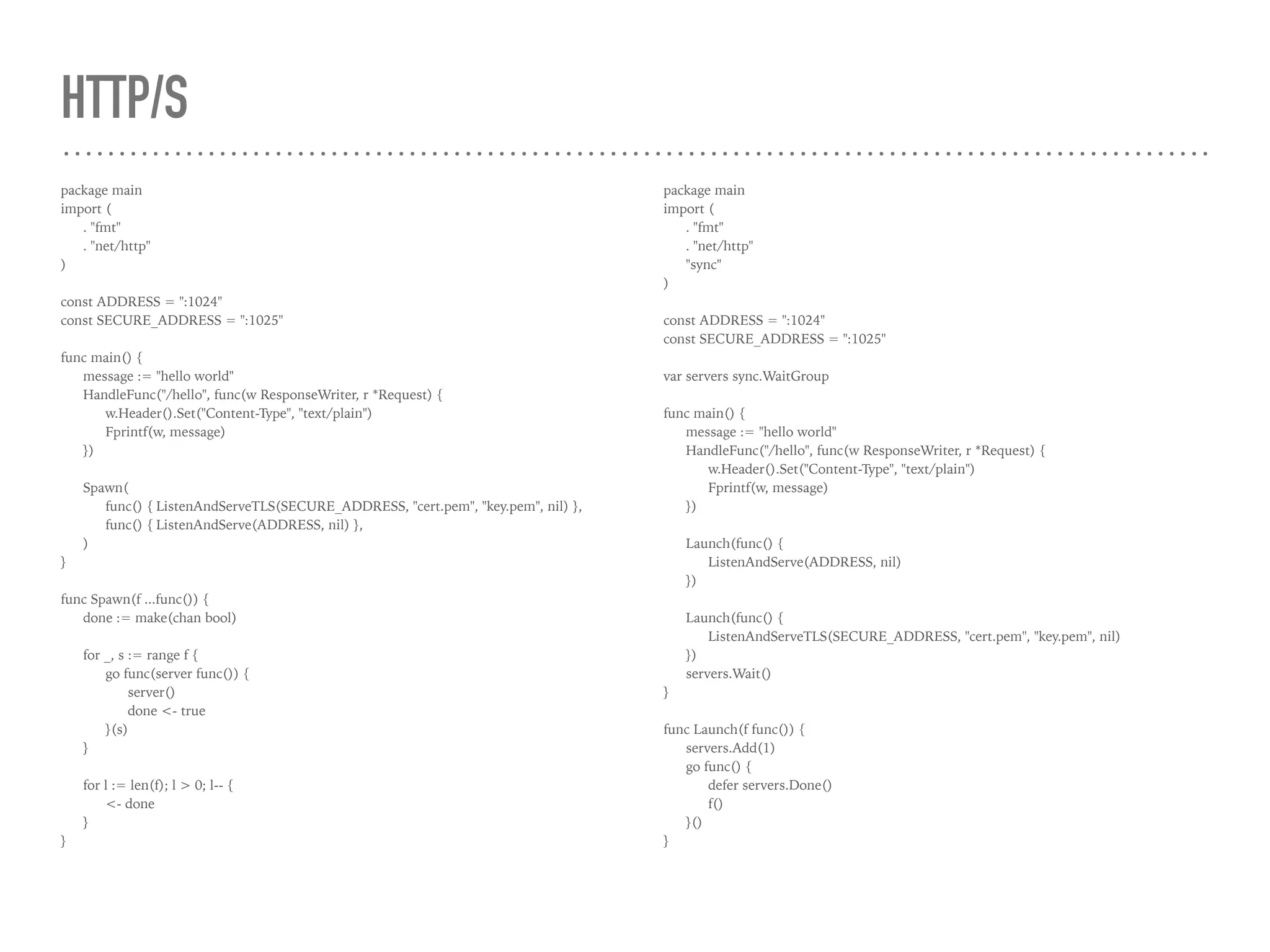

![Hello World 49
UDP
Both TCP/IP and HTTP communications are connection-oriented and this involves a reasonable amount
of handshaking and error-correction to assemble data packets in the correct order. For most applications
this is exactly how we want to organise our network communications but sometimes the size of our
messages is sufficiently small that we can fit them into individual packets, and when this is the case the
UDP protocol is an ideal candidate.
As with our previous examples we still need both server and client applications.
Example 1.53 UDP server
1 package main
2
3 import (
4 . "fmt"
5 "net"
6 )
7
8 var HELLO_WORLD = ([]byte)("Hello Worldn")
9
10 func main() {
11 if address, e := net.ResolveUDPAddr("udp", ":1024"); e == nil {
12 if server, e := net.ListenUDP("udp", address); e == nil {
13 for buffer := MakeBuffer(); ; buffer = MakeBuffer() {
14 if n, client, e := server.ReadFromUDP(buffer); e == nil {
15 go func(c *net.UDPAddr, packet []byte) {
16 if n, e := server.WriteToUDP(HELLO_WORLD, c); e == nil {
17 Printf("%v bytes written to: %vn", n, c)
18 }
19 }(client, buffer[:n])
20 }
21 }
22 }
23 }
24 }
25
26 func MakeBuffer() (r []byte) {
27 return make([]byte, 1024)
28 }
We have a somewhat more complex code pattern here than with TCP/IP to take account of the difference
in underlying semantics: UDP is an unreliable transport dealing in individual packets (datagrams) which
are independent of each other, therefore a server doesn’t maintain streams to any of its clients and these are
responsible for any error-correction or packet ordering which may be necessary to coordinate successive
signals. Because of these differences from TCP/IP we end up with the following generic workflow
• net.ResolveUDPAddr() to resolve the address
• net.ListenUDP() opens a UDP port and listens for traffic
UDP
package main
import (
. "fmt"
"net"
)
var HELLO_WORLD = ([]byte)("Hello Worldn")
func main() {
if address, e := net.ResolveUDPAddr("udp", ":1024"); e == nil {
if server, e := net.ListenUDP("udp", address); e == nil {
for buffer := MakeBuffer(); ; buffer = MakeBuffer() {
if n, client, e := server.ReadFromUDP(buffer); e == nil {
go func(c *net.UDPAddr, packet []byte) {
if n, e := server.WriteToUDP(HELLO_WORLD, c); e == nil {
Printf("%v bytes written to: %vn", n, c)
}
}(client, buffer[:n])
}
}
}
}
}
func MakeBuffer() (r []byte) {
return make([]byte, 1024)
}](https://image.slidesharecdn.com/presentation-161123175530/75/Finding-a-useful-outlet-for-my-many-Adventures-in-go-28-2048.jpg)
![UDP SERVER & CLIENT
package main
import (
. "fmt"
"net"
)
var HELLO_WORLD = ([]byte)("Hello Worldn")
func main() {
if address, e := net.ResolveUDPAddr("udp", ":1024"); e == nil {
if server, e := net.ListenUDP("udp", address); e == nil {
for buffer := MakeBuffer(); ; buffer = MakeBuffer() {
if n, client, e := server.ReadFromUDP(buffer); e == nil {
go func(c *net.UDPAddr, packet []byte) {
if n, e := server.WriteToUDP(HELLO_WORLD, c); e == nil {
Printf("%v bytes written to: %vn", n, c)
}
}(client, buffer[:n])
}
}
}
}
}
func MakeBuffer() (r []byte) {
return make([]byte, 1024)
}
package main
import (
"bufio"
. "fmt"
"net"
)
var CRLF = ([]byte)("n")
func main() {
if address, e := net.ResolveUDPAddr("udp", ":1024"); e == nil {
if server, e := net.DialUDP("udp", nil, address); e == nil {
defer server.Close()
for i := 0; i < 3; i++ {
if _, e = server.Write(CRLF); e == nil {
if text, e := bufio.NewReader(server).ReadString('n'); e == nil {
Printf("%v: %v", i, text)
}
}
}
}
}
}](https://image.slidesharecdn.com/presentation-161123175530/75/Finding-a-useful-outlet-for-my-many-Adventures-in-go-29-2048.jpg)

